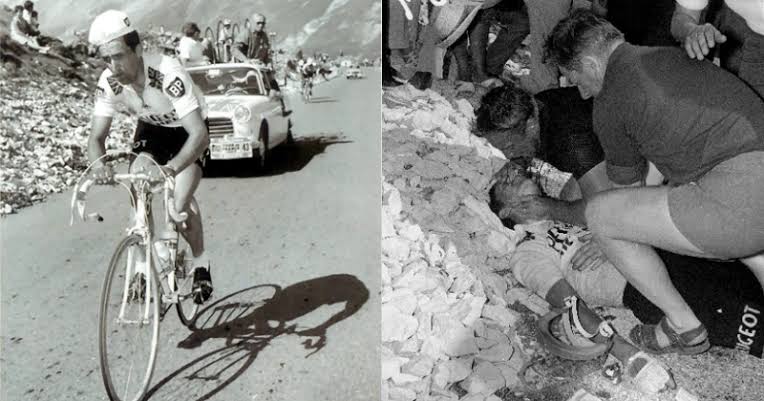
The 1970 Tour de France is remembered not for the thrilling competition or the remarkable feats of cycling, but for a tragic and haunting event that would change the sport forever. The incident, known as **Tommy Simpson’s “Misery Fall,”occurred on July 13, 1970, during Stage 13 of the Tour, on the legendary climb of Mont Ventoux. It was a moment that would cast a shadow over the history of the race, highlighting the dark side of professional cycling, particularly the issue of doping and the extreme pressures athletes faced.
Tommy Simpson: A Star in Decline
Tommy Simpson, one of Britain’s most accomplished cyclists at the time, had long been a fan favorite, known for his tenacity, passion, and determination. Simpson had been a prominent figure in international cycling, having already earned significant victories, including a bronze medal in the 1964 Tokyo Olympics and a win in the prestigious Paris-Roubaix race. However, despite his success, Simpson’s personal and professional life was spiraling into chaos as he approached the 1970 Tour de France.
Leading up to the Tour, Simpson was battling personal demons, including substance abuse and mental health struggles. He had become increasingly dependent on **amphetamines**, alcohol, and **corticosteroids** to keep up with the grueling demands of professional cycling. These substances, though 
The Tragic Fall on Mont Ventoux
Stage 13 of the 1970 Tour de France was set to be one of the most demanding stages, taking riders up the unforgiving slopes of **Mont Ventoux**, one of the most iconic climbs in the sport. Simpson, who had been struggling with fatigue and physical decline throughout the race, appeared in trouble even before reaching the final ascent. During the early part of the stage, he had been seen struggling to keep pace with the peloton, a clear indication that his condition was deteriorating.
By the time Simpson reached the slopes of Mont Ventoux, his body had simply given out. Reports suggest that he was disoriented and weak, unable to maintain control of his bike. As he neared the summit, Simpson swerved across the road and then fell to the ground, unconscious. His collapse was sudden and dramatic, and spectators and race officials quickly rushed to his aid. Tragically, despite the efforts of medical personnel, it was too late—Tommy Simpson had passed away.
An autopsy revealed that Simpson had a combination of alcohol and amphetamines** in his system, along with traces of **corticosteroids. It was clear that the toxic mix had contributed to his collapse, and his death marked a turning point in the history of the sport. His tragic end cast a long shadow over the race, and the cycling world was forced to confront the grim reality of the dangers inherent in the sport at the time.
The Aftermath and Legacy
Simpson’s death had an immediate and profound effect on the Tour de France and the sport of cycling as a whole. It led to widespread outcry and prompted an internal reckoning within the cycling community. While doping was still widely accepted and even overlooked in the sport, Simpson’s death made clear the dangerous consequences of excessive drug use. Although anti-doping regulations were not fully instituted until years later, Simpson’s demise accelerated discussions about rider safety, the mental and physical toll of the sport, and the need for more stringent regulations.
In the years following Simpson’s death, the issue of doping continued to plague the sport, but his story was pivotal in raising awareness. Cyclists and teams began to face greater scrutiny, and the death of Tommy Simpson became a symbol of the sport’s darker side.
Today, his story serves as a reminder of the extreme pressures professional cyclists face, both from their teams and the public, to perform at the highest level, often at the expense of their health. The “Misery Fall” on Mont Ventoux remains one of the most haunting moments in the history of the Tour de France, a stark and tragic illustration of the lengths to which riders would go to push themselves beyond their limits. Simpson’s legacy lives on as a symbol of the dangers of unregulated drug use and the need for a safer, cleaner future for cycling.
Leave a Reply